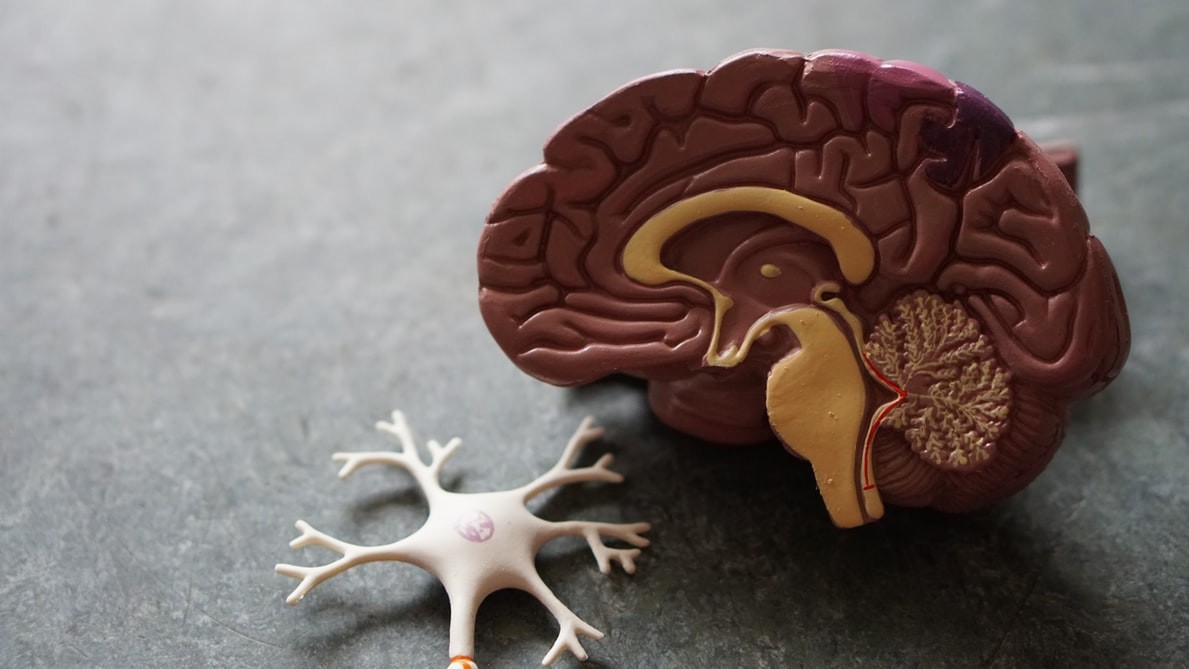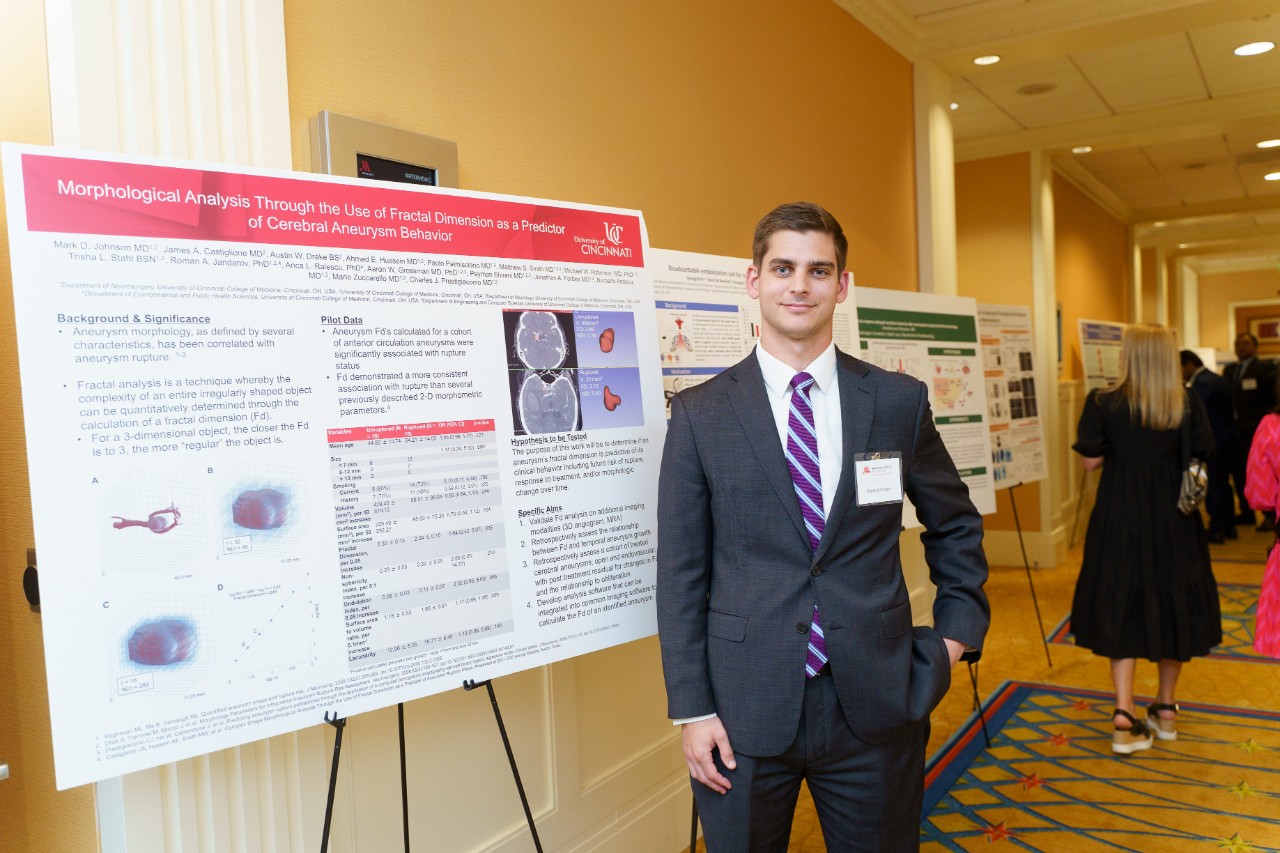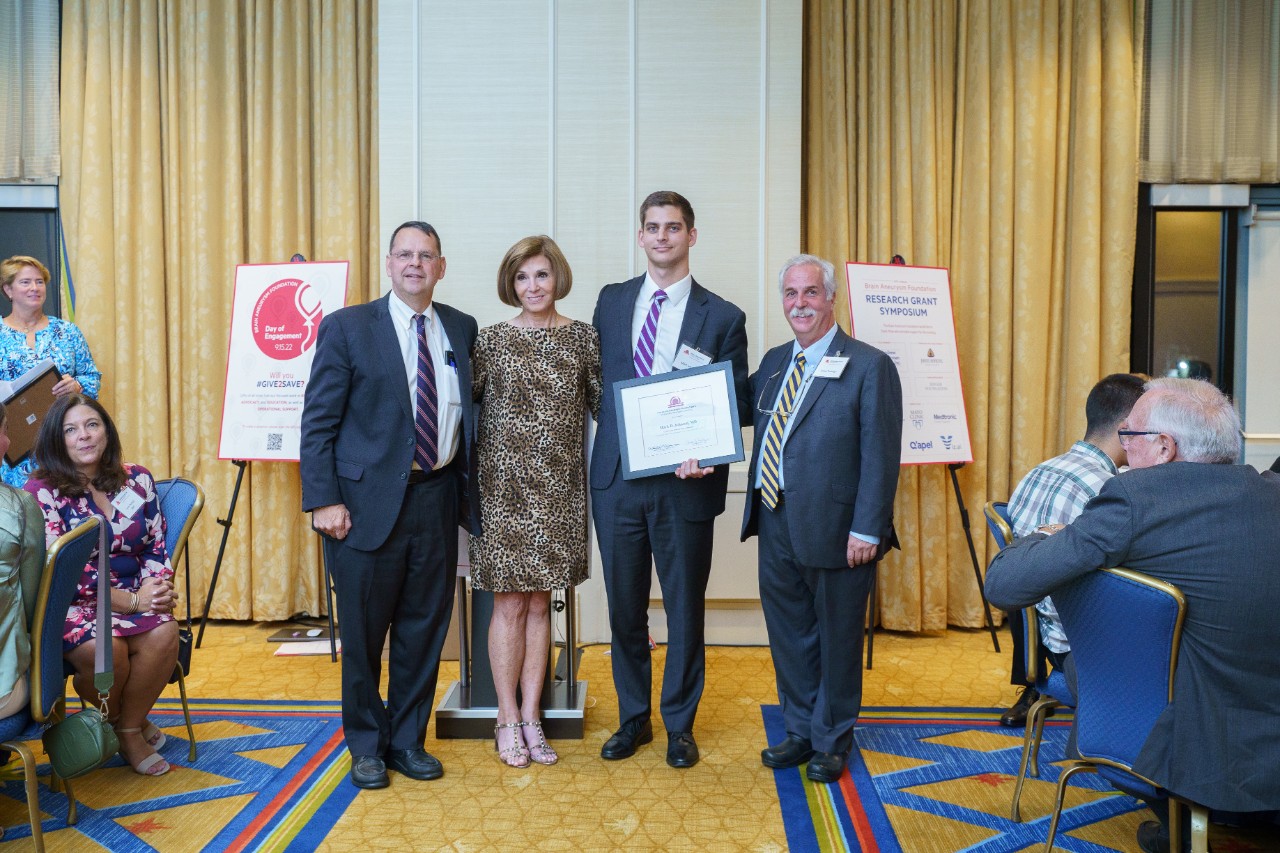
UC research team receives Brain Aneurysm Foundation grant
Researchers hoping to uncover a more accurate way to predict if an aneurysm will rupture
Researchers at the University of Cincinnati Department of Neurosurgery are hoping to uncover a more accurate way to predict if an aneurysm will rupture. Currently, providers look at the size of an aneurysm, but Charles J. Prestigiacomo, MD, and Mark Johnson, MD, are looking at the shape.
It is generally accepted that any aneurysm larger than 7 millimeters should be treated, when also taking into account other risk factors, such as patients who smoke, have hypertension or are female. Now, the team is hoping to define how to analyze an aneurysm’s shape to assess the risk of it rupturing.
“Subjectively, experts have described aneurysms as being irregular shaped or smooth shaped,” says Johnson, a fourth-year neurosurgery resident, “and the irregular aneurysms have been correlated in different population groups as more likely to rupture.”
The idea of studying an aneurysm’s shape is not new, but previously researchers have only looked at 2-dimensional shapes. UC neurosurgeons are looking at 3-D aneurysms. Under the direction of Prestigiacomo, the grant's principal investigator, Johnson and colleagues have developed a scoring system where a number can be assigned based on the morphological numerical.
“We’re using an interesting geometrical theorem,” Johnson said. “If we can validate that this works as an objective measure of that irregularity, then it is much easier to submit that integer to regression analysis to look at in a multi-variable model that could be used to help predict rupture risk, along with traditional risk factors.”
Essentially, the team hopes to turn this subjective way of using an aneurysm’s shape into an objective one.
That caught the attention of the Brain Aneurysm Foundation in spring 2022, when Johnson applied for a grant. The researchers secured the grant in July for the project, titled Morphological Analysis Through the Use of Fractal Dimension as a Predictor of Cerebral Aneurysm Behavior.

Mark Johnson, MD, presents his research. Photo provided.
Johnson has been combing through images of aneurysms in patients who have been treated at UC Health in the past seven years. He is hoping to transform between 500-700 of those images Into 3-D models.
“I make the 3-D model through a process called segmentation,” Johnson said. “I take the sourced images that were generated for clinical use and I put them into a software that turns the 2-D scans into a 3-D model. Then, I extract the aneurysm and do a shape analysis on it though a software program developed by former UC medical student Jimmy Castiligione.”
Initial pilot data of 30 patients suggests that Johnson and Prestigiacomo are on to something.
“There seems to be a strong correlation with prior rupture, more so than some of the other morphologic variables that have been tested,” Johnson said.
The pilot study only used data from computed tomography (CT) angiograms, and Johnson is hoping the correlation continues with different imaging modalities, like diagnostic angiograms and magnetic resonance angiograms.
“I want to make sure the measure you get with a DSA or MRA picture gives you a similar enough fractal dimension value that you can compare across the three imaging modalities,” he said.
An aneurysm’s growth will also be assessed to determine if it, too, could be used to predict risk of rupture. Additionally, Johnson will look at the fractal dimension of residual aneurysms to see if it is predictive of whether an aneurysm grows or resolves on its own.
Johnson aims to finish the study by September of 2023 and will be presenting the results of the trial at the Brain Aneurysm Foundation’s annual scientific meeting in Charleston, South Carolina.

Johnson and colleagues have received a $30,000 Brain Aneurysm Foundation grant to further their research. Photo provided.
Featured photo at top of model of a brain. Photo/Robina Weermeijer/Unsplash.
Related Stories
SELF: 6 things you should know about exercise and the COVID-19 vaccines
May 4, 2021
Carl Fichtenbaum, MD, of the UC College of Medicine Division of Infectious Diseases, was one of the sources cited in an article published by SELF on six things to know about exercise and COVID-19 vaccines.
Fox19: World Voice Day with UC Health
April 15, 2021
Rebecca Howell, MD, of the Department of Otolaryngology-Head and Neck Surgery in the UC College of Medicine, was interviewed by WXIX-TV, Fox19 about World Voice Day coming up on Friday, April 16.
Cincinnati.com: It's spring. You're vaccinated. We asked docs what they feel is safe, what they'd avoid
April 12, 2021
Jennifer Forrester, MD, of the UC College of Medicine Division of Infectious Diseases was one of the expert sources cited in an article on Cincinnati.com on how safe or unsafe doctors feel certain activities are as we get into spring and more and more people are vaccinated against COVID-19.
The Body: How one Black woman wrestles with vaccine hesitancy
April 20, 2021
Carl Fichtenbaum, MD, of the Division of Infectious Diseases at the UC College of Medicine was one of the sources cited in an article published in The Body about the author's concern about getting the COVID-19 vaccine. Fichtenbaum stressed the safety and efficacy of the vaccines and said they would not interere with treatments for cancer and HIV/AIDS.
2021 University Recognition Ceremony honors student achievements
April 13, 2021
The University of Cincinnati recognizes students each year who have made significant service, leadership, and academic contributions to the UC community. These students exemplify the spirit of what it means to be a Bearcat.
UC Day of Giving a success
April 28, 2021
University of Cincinnati Day of Giving’s 24-hour challenge was a tremendous success this year, raising $2,219,197 with 3,232 gifts. The fourth annual UC Day of Giving raised its most money to date with alumni, donors, students, faculty and staff joining together to support UC and UC Health.
Medscape: New study confirms kidney dialysis worsens pregnancy outcomes
April 30, 2021
Silvi Shah, MD, of the Division of Nephrology, Kidney CARE Program, at the UC College of Medicine, was cited as a source in a Medscape story on new research showing that kidney dialysis worsens outcome for pregnant women.
President picks exceptional talent
April 28, 2021
The University of Cincinnati 2021 Presidential Leadership Medal of Excellence Awards honor six undergraduate scholars for scholarship, leadership, character, service and the ideals of the university. Awardees are spotlighted for exceptional academics, creativity, community service and innovation.
Grad students earn president's highest honor
April 28, 2021
The University of Cincinnati 2021 Presidential Medal of Graduate Student Excellence Awards honor three graduate scholars for scholarship, leadership, character, service and the ideals of the university. Awardees are spotlighted for exceptional academics, creativity, community service and innovation.
WCPO-TV: Experts: Reopening states still far from herd immunity
June 8, 2021
Masks are coming off in Ohio, Kentucky and Indiana, thanks to widespread availability of the COVID-19 vaccine and politicians’ increasing willingness to let unvaccinated people roll the dice on their own health. WCPO-TV interviewed Carl Fichtenbaum, MD, of the UC College of Medicine Division of Infectious Diseases who said any amount of vaccination is helpful in preventing the novel coronavirus from spreading, but unvaccinated people are still in danger as social gatherings and indoor events resume.
